Proudly Presenting Three Exquisite Fresh-Pressed Olive Oils from the Iberian Peninsula!
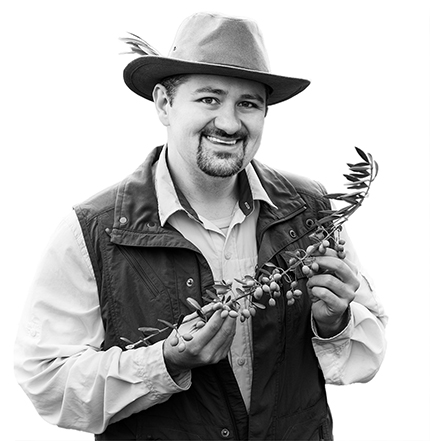
- Bursting with healthful polyphenols (some of the highest I’ve seen in years), these olive oils are all from award-winning family-owned groves.
- All have been tested and certified by an independent lab to be 100 percent extra virgin olive oil.
- Rushed to you by jet at their peak of flavor, these oils will be fantastic additions to your spring menus.
- All three are Club exclusives and are available nowhere else in America!
In biblical times, the story goes, Noah released a dove to determine if there was life to be found in the wake of an epic flood. The bird returned with a green olive leaf clutched in its beak, gladdening Noah’s heart. When a devastating heat wave swept Southern Europe several months ago—a scorching tsunami nicknamed “Lucifer” by climatologists—I despaired of finding the ultra-premium extra virgin olive oils my Club members love and expect each quarter. Even Francisco “Paco” Vañó of Castillo de Canena, one of the most resilient, consistent, and resourceful producers I know, was concerned. (Read more about Paco below.)
But the scouts I dispatched in advance of my recent visit to the Iberian Peninsula were cautiously optimistic, handing me the metaphorical equivalent of a green olive leaf! Olive oil quantities would likely be lower, they said, but the quality was predicted to be even better than last year. I found this to be true when I hit the ground. In fact, the polyphenol levels, which give olive oil many of its healthful properties, are among the highest I’ve seen in years.
Fresh-Pressed Olive Oil Is a Healthful Tonic
Aren’t you craving a restorative tonic like this? Bring on the fresh asparagus, the morel mushrooms, the spring onions, the fiddlehead ferns, the ramps, and other seasonal foods— all drizzled with stunningly fresh and flavorful olive juice. See below for new and inspiring Spanish and Portuguese recipes.
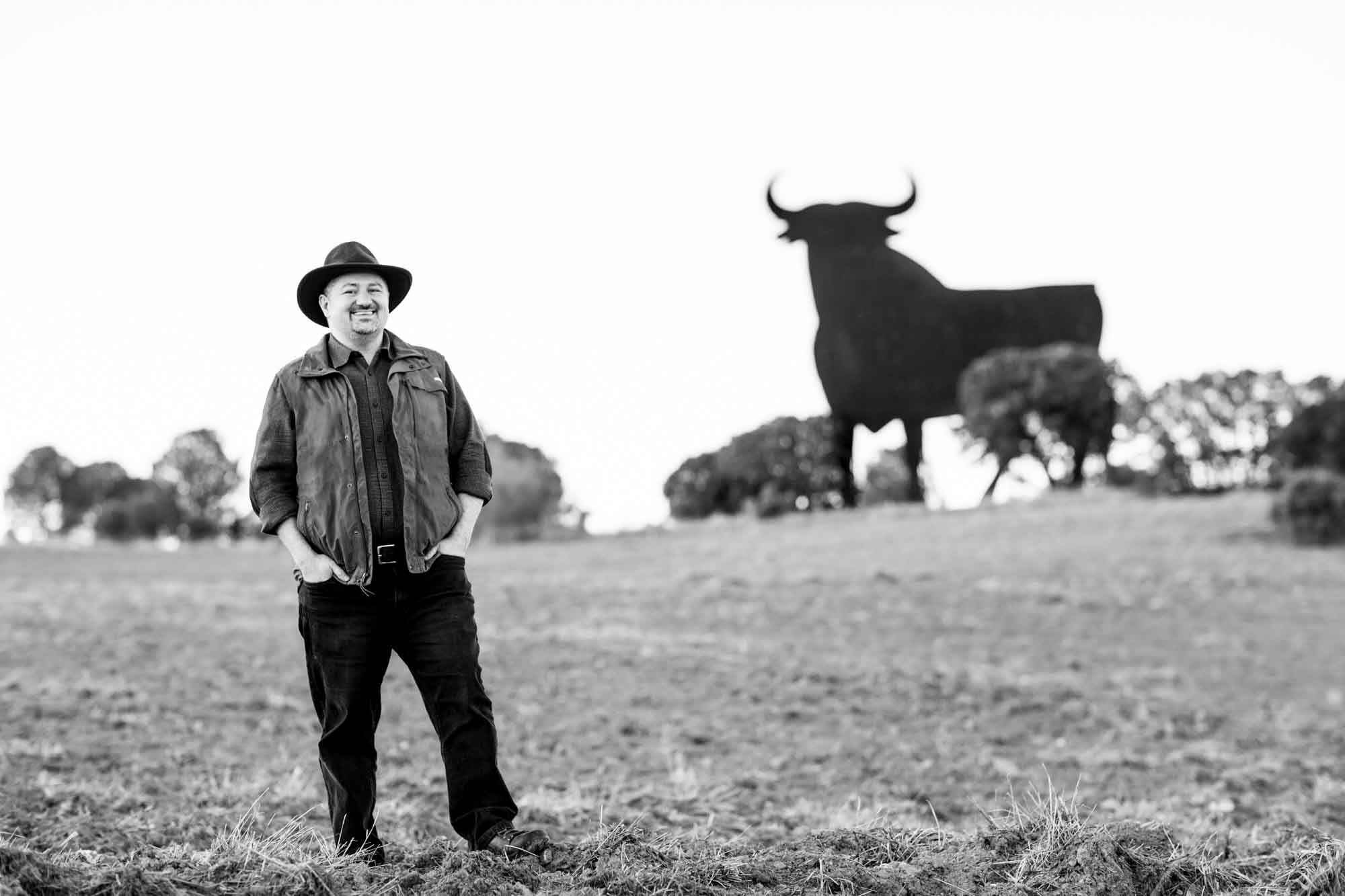
The first stop on my hunt for three precious extra virgin olive oils was Andalucía, an autonomous community in the south of Spain. The Roman Empire conquered the region in 212 BCE, quickly recognizing the stony Guadalquivir River Valley (now named Jaén) was perfect for olive trees. So popular was its olive oil in Italy that an artificial hill in southeastern Rome—Testaccio—was built from millions of smashed amphorae, imported from Spain.
When the empire collapsed, other cultures found Andalucía too tempting a prize to pass up. Most of the invaders improved olive growing practices; the Arabs even introduced irrigation to what became the world’s largest manmade forest, now the source of more than 40 percent of the planet’s olive oil.
No Rain in Spain
The Roman philosopher Pliny the Elder evidently knew a thing or two about farming. He sagely recommended spacing olive trees 55 feet apart to prevent them from pilfering each other’s water—advice modern farmers would do well to follow in arid years like this one.
And while we’re on the subject… In tandem with the heat wave, which delivered daytime temperatures exceeding 110°F, parts of the Mediterranean have been plagued by a prolonged drought. It’s now in its fourth year. Many regions have reported zero rain for six months. Lakes, rivers, aquifers, and wells are drying up. In Spain, where less than onequarter of the country’s olive trees are irrigated, farmers are using up to 30 percent more water to keep their thirsty trees hydrated, alive, and thriving—water they’re often compelled to buy from other local sources. Portugal is faring no better.
Paradoxically, Jaén Selección by the Diputación Provincial de Jaén, a prestigious annual competition in Spain’s most important olive growing province, typically receives fewer than two dozen entries. You’d think this difficult growing year would limit the field. So it was surprising when 60 oils were entered in the most recent contest.
Viva the Revolution!
I had a bit of an inside track this year. My friend Santiago Botas, an international food and olive oil expert, was familiar with the entrants. In a lively discussion in Madrid over coffee, he exclaimed that there’s been a “revolution” going on in Jaén’s olive groves and almazaras (mills) for the past fifteen years or so.
“We were producing for quantity, not quality,” he said. “That is changing. We are obtaining lower yields but better [organoleptic] qualities.” That has been my experience as well. I only work with top-tier producers—perhaps less than one percent of growers satisfy my discriminating requirements.
Santiago, who will be featured in a documentary on Spanish Picual olives that is currently being filmed, credits visionaries like Paco from Castillo de Canena and the Gálvez family of Finca Gálvez with leading the charge. (Before speaking to Santiago, I had already visited both producers and selected their oils for Club members this quarter. But it was gratifying to have my choices affirmed by this colleague and authority.) He is thrilled with Jaén’s newfound commitment to making premium olive oils, and hopes other provinces will follow suit. The Spanish government, he noted, is sponsoring generous olive-related subsidies to help both cooperatives and private parties improve their oils and compete at the highest levels in the olive oil world.

Meanwhile, my Merry Band of Tasters and I were expected in northern Portugal, roughly an eight-hour drive over sometimes rugged terrain, to taste the very special oils of Filipe de Albuquerque Madeira and his gracious family. These oils are pressed from olive varietals that are unique to Portugal. Heirloom olive trees, if you will, that have adapted to the schistous soil. I am always happy to do whatever I can to support smaller growers who are committed to sustaining these glorious trees, living pieces of history (some of the trees in the Madeira family groves are nearly 1,000 years old!)
Please enjoy these spectacular newly harvested oils. Use them and share them in good health!
Happy drizzling!

T. J. Robinson
The Olive Oil Hunter®
P. S. Cold weather may cause cloudiness in your bottles of olive oil. Pay it no heed, as this has no effect on quality or flavor. Simply bring your oils to room temperature and most of this cloudiness should disappear. For best results, always store your oil in a cool, dark place, preferably in a cabinet away from heat and light.
This Quarter’s First Selection

I once met a world-renowned “extreme” ski jumper. Dropped from a helicopter onto an otherwise unapproachable mountain peak, he proceeds to ski off a ledge into the abyss, careening through space to land on a slope below, slicing his way down the nearly vertical, uncharted mountain face. To my mind this may seem the very embodiment of insanity, but, as they say, “Diff’rent strokes for diff’rent folks.”
I thought of the ski jumper recently, as I stood atop a craggy mound of rocks in northern Portugal, exploring the latest olive planting project of the Madeira family. I call the Madeiras “extreme olive oil producers.” They may not be literally skiing off cliffs, but they take intensely calculated risks in a rough, untamed landscape, making the most of what Mother Nature has to offer in unforgiving conditions, with spectacular results.
Located about 90 kilometers (55 miles) northeast of the city of Porto, the Trás-os-Montes e Alto Douro province (alto means “upper”) is characterized by impossibly steep hillsides composed of metamorphic rock. You’re likely familiar with this region’s most famous agricultural product, the fortified wine Porto, but I urge you to dispel any visions of gently rolling hills and valleys. As the World Wine Atlas puts it, “Of all the places men have planted vineyards, the Upper Douro is the most improbable.” The same challenges apply to olive cultivation, too.

The predominant stone in this region is schist (xisto in Portuguese, pronounced “shisto”), a flaky, layered volcanic rock that ranges in appearance from slate-gray to yellowishorange, often with shimmering metallic flecks. (See photo below.) The ground here is not that of gardens or croplands, with a rich, loose layer of topsoil, or even the sandy, rocky soil of the Mediterranean. Here, a plant’s roots must push through the schist to reach the water trapped between its layers. Water itself is typically scarce: in summer the heat can reach a blistering 110˚F at its peak, and irrigation is nearly nonexistent. With nightfall, though, the temperature may drop as much as 30 degrees.
Although these conditions are stressful for the olive trees, they appeal to me and the ingenious artisans I work with. Scarcity of water and high heat—as long as it doesn’t scorch the olive blossoms in the spring—help to intensify the aromas and flavors in the olive fruit.
Although these conditions are stressful for the olive trees, they appeal to me and the ingenious artisans I work with. Scarcity of water and high heat—as long as it doesn’t scorch the olive blossoms in the spring—help to intensify the aromas and flavors in the olive fruit.
Celso Madeira, the tireless 84-year-old patriarch of the Douro farm, took the initial leap into the world of premium olive oil production about two decades ago, when he declared that the abandoned olive groves on the family’s land—with trees ranging from 80 to 1,000 years old—should be transformed into a first-class olive farm.
His son Filipe joined him on this plunge into the unknown. Detouring from studies at the University of Genoa, Filipe undertook to teach himself everything about olive cultivation and state-of-the-art milling techniques. In astoundingly short order, the family’s oils were sweeping Portuguese olive oil competitions and earning international awards.
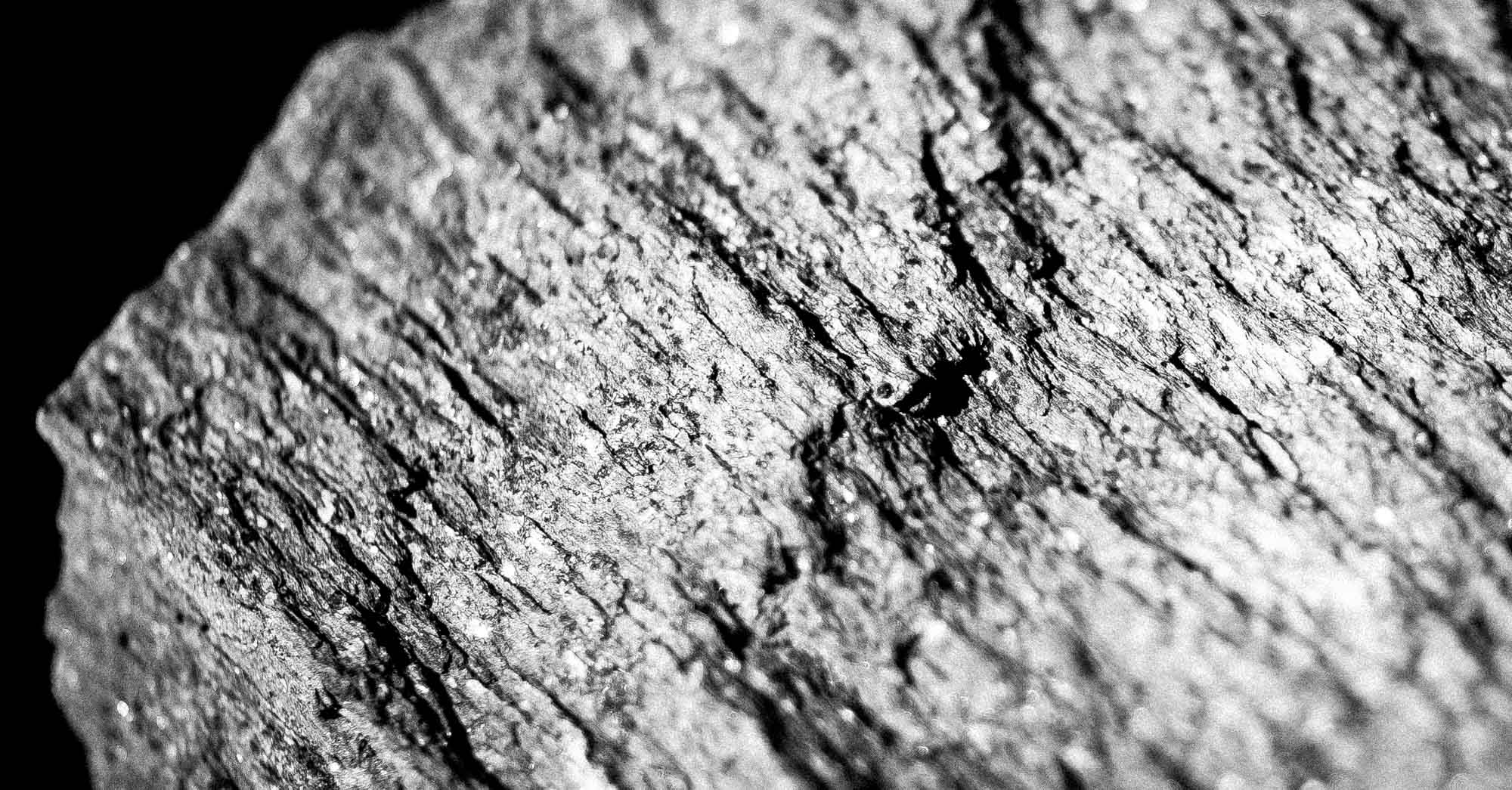
Celso, exuberantly devoted to the family’s legacy, recently purchased parcels of land to expand the Douro groves. The trees soon to be planted will bear fruit for hundreds of years, Mother Nature willing. He and Filipe were excited for us to witness the process of preparing the terrain for olive horticulture (see photo above). First, a Caterpillar bulldozer digs down 3 meters (9 feet) to turn over the mineral-rich, rocky earth. Next, another machine will grind the rocks into tiny pieces, a pebbly soil, in which the olive seedlings—all native varieties— will be planted.
The Douro groves are home to indigenous olive varieties, grown only in Portugal and nowhere else in the world. Their delicate, floral perfumes and flavors are unique to this region. I am grateful for the chance to help conserve and celebrate this (delicious and special) branch of olive oil history. You, my lucky Club members, are among the very few Americans ever to taste the oil from these rare and exquisite olives!
Impressions and Recommended Food Pairings:
This beautiful oil is golden green in the glass, with a nose reminiscent of fresh grass, wild mint, and green banana. My tasters and I also detected pear, Belgian endive, apricot, vanilla, white pepper, and thyme. There’s a hint of minerals that translates to spinach. Its aroma is pleasantly nutty—sweet almonds (which also thrive in this corner of Portugal) and hazelnuts are prominent. Although this oil is relatively mild, a bouquet of flavors blooms in the mouth. Fruity, with a bitterness akin to radicchio or celery leaves. Well-balanced and food-friendly, the finish is both long and complex with a touch of pepper.
Pair this oil with proteins such as chicken or mild fish, hearty greens like collards, cabbage, endive, or salads featuring fruit, nuts, or goat cheese. At formal dinners the family hosted, we enjoyed it with beans as well as a variety of vegetable purées. Its nuttiness makes it a natural in baked goods, too—try it with chocolate cake or quick breads. On the farm, the harvest is always celebrated with a dish called bacalhau à lagareiro—cod grilled over an olive wood fire with the just-pressed olive oil, garlic, bay leaf, and small potatoes in their jackets.
This Quarter’s Second Selection
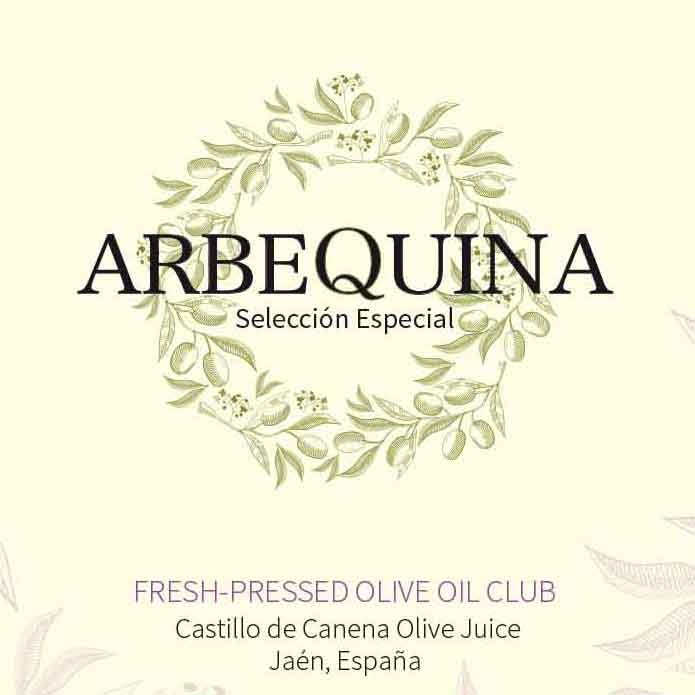
One of the highlights of my annual olive oil pilgrimage to Spain is a visit to Canena, a small hillside village tucked in a region affectionately dubbed the “Spanish Tuscany.”
Presiding over its whitewashed buildings and red clay tiled roofs is a magnificent castle known as Castillo de Canena. Built by the Arabs in the 15th century over the ruins of a Roman fortification, its balcony is my favorite vantage point from which to view the seemingly never-ending, corduroy-like rows of olive trees that define Jaén. (Annually, the province produces more olive oil than Greece.) Lucky for me, the castle is owned by one of my longtime friends, Francisco “Paco” Vañó and his family. His family has been in the olive oil business since 1780. (Though privately owned, the castle is open to visitors on Mondays between the hours of 4 p.m. and 7 p.m.).
With nine generations of experience guiding him, it’s no surprise that bold but debonair Paco, succeeding his father as the head of Castillo de Canena, has become one of the world’s most respected premium olive oil producers. Never afraid to champion highquality olive oils (prizing quality over quantity), he runs the company with his sister, Rosa Vañó. Castillo de Canena’s olive oils are consistently among the top twenty in the world as evaluated by Flos Olei, the Michelin-like guide to olive oils.
For several years running, the Vañós’ Picual has been named a Jaén Selección by the Diputación Provincial de Jaén, a prestigious honor bestowed on only eight oils out of a field of dozens. Their oils are favored by some of Spain’s most influential chefs.
Surrounded by the obligatory tapestries and wall trophies in the castle’s cavernous dining hall, Paco explained to my Merry Band of Tasters and me the challenges he had to overcome during this harvest year.
Primary among them was record-breaking heat exacerbated by a sustained drought. Temperatures reached levels previously unheard of in the region—over 114 degrees. Though Castillo de Canena’s groves are irrigated, weekly water rations for each tree were bumped from 101 gallons to 135 gallons. If those numbers sound very precise, it’s because they are. Like me, Paco is a stickler for detail. He employs some 20 markers for identifying the optimal time for picking the olives.
“Excellence is a habit, and working daily with this maxim makes our team increasingly stronger,” says Paco.

Over the years, this olive oil pioneer has developed some ingenious methods for amplifying and preserving the olives’ quality. Because heat is an enemy of harvested fruit, Paco’s team picks only at night, the groves illuminated by bright lights. He also uses a special double grid mill to press the olives, which reduces friction and keeps the temperature of the olive paste down. No flavor-diluting water is added during the process.
This year’s Fresh-Pressed Olive Oil Club selection is a blend of two lovely Arbequinas, one harvested several days before the other. Paco’s cook, who works from a deceptively small kitchen given the scale of the castle, prepared several outstanding dishes for lunch. All paired wonderfully with the blend: jamón ibérico de bellota; a savory but delicate egg custard; boquerones (anchovies); a flavorful beet and carrot purée with an olive oil drizzle; roasted beef tenderloin with foie gras and root vegetables; and chocolate mousse for a sweet finish (see below for a recipe).
At the end of the visit, Paco’s valet helpfully retrieved several suit bags from the back of the dusty Range Rover we’d driven to the olive groves and transferred them to a clean, shiny, black SUV. The dynamic Paco’s day was apparently not over!
Impressions and Recommended Food Pairings
This brilliant blend of two Arbequinas with staggered harvests teases the olfactory senses with the aromas of green banana, walnuts, green almonds, and lime zest. Warm it slightly with the heat of your hands before tasting. This oil’s grassiness—characteristic of an early-harvest Arbequina—is cut with a honeyed floral note and a touch of mint. Chocolate was even used as a descriptor. Lively and fresh, you can almost feel the polyphenols dancing on your tongue. The fruitiness is deftly balanced with the spiciness of watercress or arugula, the bitterness of sturdy greens, the tang of citrus, and the pungency of fresh herbs. The peppery finish lingers.
This oil pairs amazingly well with eggs, pork, shrimp, lobster, veal, potatoes, or cauliflower. We love it drizzled over a salad of fresh fennel and oranges. Its citrus and herbal notes (especially mint) and rich mouthfeel are sauce-like. You’ll love experimenting in the kitchen with this remarkable oil!
This Quarter’s Third Selection
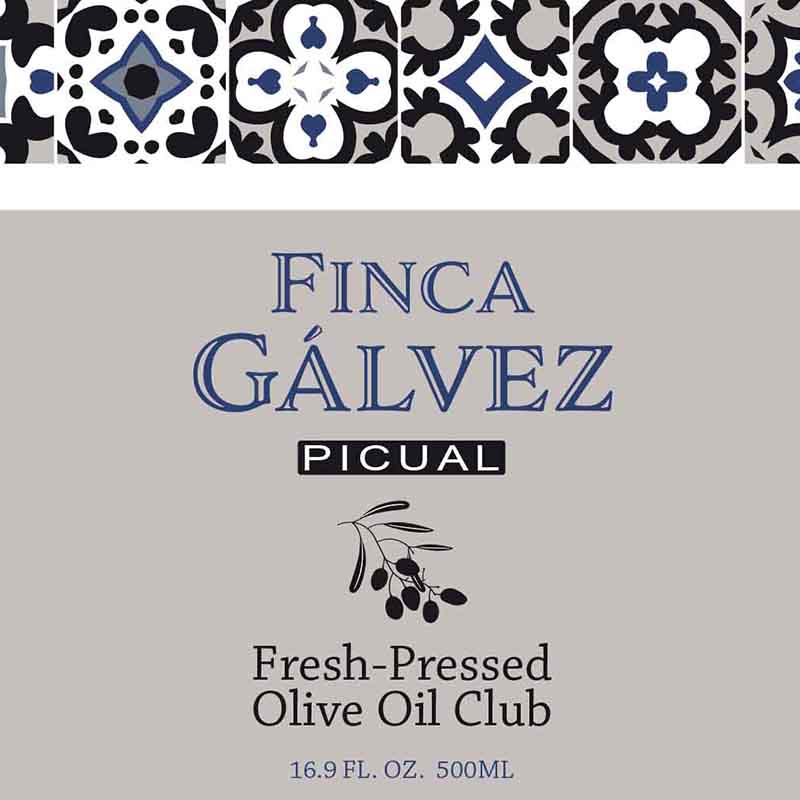
When my Merry Band of Tasters and I pulled up to Finca Gálvez, a short drive from Madrid, a swarm of Spanish law enforcement vehicles crowded the entrance. A foiled olive oil heist? I wondered.
Messenger bag slung across my shoulders, I stepped out of our station wagon. A Guardia Civil (GC) officer approached and inquired, “What’s in the bag?” A member of our group who speaks excellent Spanish translated, while I identified the mundane contents of my satchel. “Computer… olive oil tasting cups… pen.” The guard relaxed and waved us on. (Whew!)
As it turns out, our arrival coincided with the submission phase of one of the strictest and most prestigious competitions of the International Olive Council. Certified legal officials arrive in person to verify and collect olive oil samples from each competing producer (otherwise, as I was informed, unscrupulous people could buy or steal samples to submit as their own). This year some higher-ups from the ministry of agriculture had invited themselves along to observe the process—thus the accompanying entourage of bodyguards and GC.
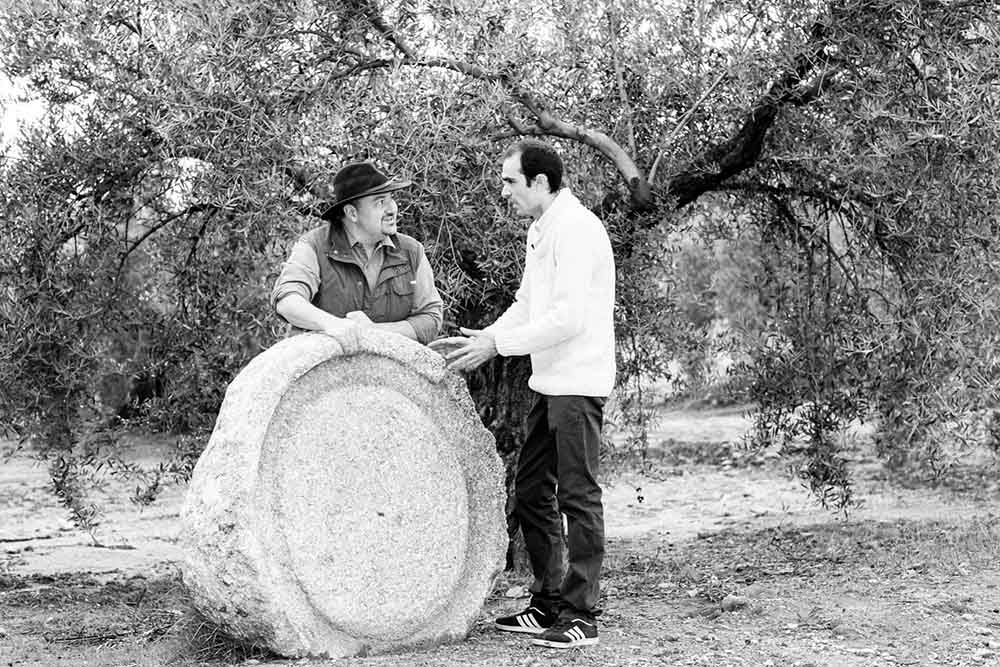
This gives you some idea how seriously the province of Jaén takes its olive oil. In the US you might expect this kind of hoopla surrounding the release of a Star Wars movie or a new smartphone; in Spain, it’s all about the liquid gold. And, as if at an awards show, the ministry officials emerged from their tour of the mill with “swag bags”…full of olive oil.
Finca Gálvez (finca is Spanish for “farm”) helped put Spanish ultra-premium olive oil on the map. Founded in 1999, with groves located between the Castilian Plateau and the Guadalquivir River Valley, the family-owned farm continually strives for improvement in every aspect of olive oil production— cultivation and harvesting techniques, irrigation systems, and community education. Last year, they unveiled a spacious, welcoming classroom next to the mill, where locals and tourists alike can participate in olive oil tasting classes and food pairing workshops.
My scouts had tipped me off that this season’s oils at Finca Gálvez promised to be outstanding. The drought conditions in Spain had occurred during a year of lower fruit yields for the farm—an oddly ideal pairing of factors (in the way that two negative numbers, multiplied, give a positive result). As Andres Gálvez explained, “If we’d had more fruit on each tree, there would not have been enough water, and we wouldn’t have had the same quality of olives.”
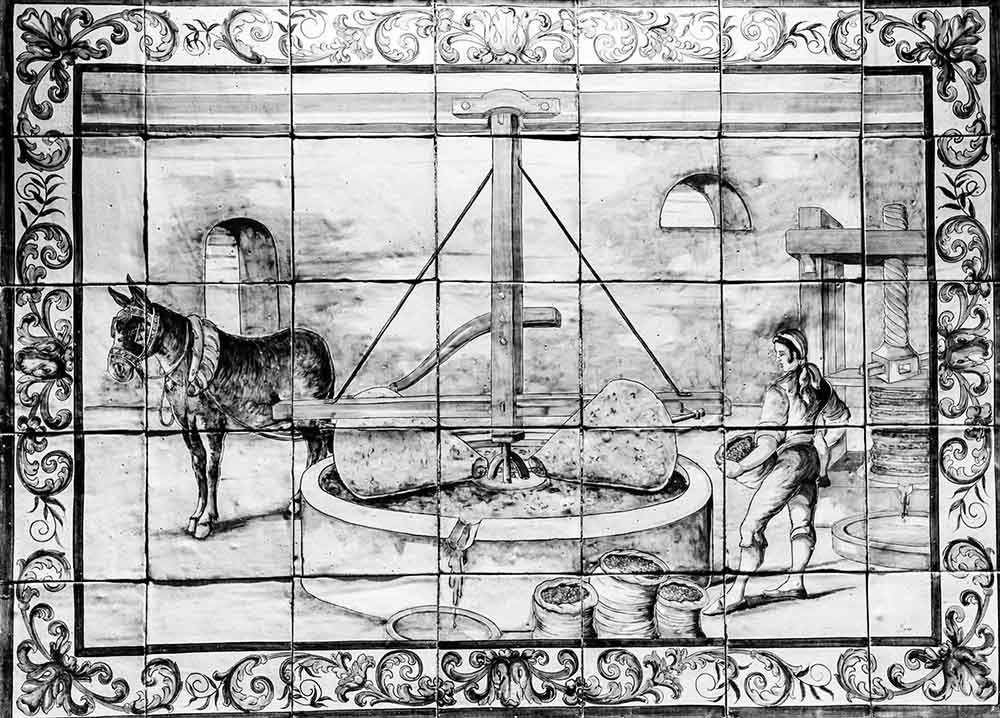
As much as we tend to idealize “the old ways,” I thank my lucky stars for the many improvements to olive harvesting and milling techniques over the past several decades, in particular the minimizing of contact with oxygen during the pressing process. These advances have enabled artisans such as the Gálvez family to create oils bursting with flavor, personality, and polyphenol levels beyond their ancestors’ wildest dreams.
In order to capture the fruit’s peak flavor, Andres and his team “played with the light of the sun,” as he puts it, beginning the harvest at 7:30 a.m. and stopping by 12:30 p.m., in order to pick and press the fruit during the cooler part of the day.
We created a taste-tempting combination of two Picual oils, harvested about a week apart, that showcases the qualities I treasure in this variety—dark, intensely green flavors with complex spiciness and a long, full finish.
Our brilliant blend made its debut at the restaurant Los Sentidos (“The Senses”), in nearby Linnares, where Finca Gálvez has partnered with the chef to encourage culinary exploration with olive oil.
As we drove to the restaurant, knowing my deep love of jamón ibérico, Andres called ahead to speak with the chef—not, as might be expected, to ask whether they had it, but to inquire exactly where on the ham they were carving at that moment, in order to requisition the tenderest, melt-in-your-mouth slices for our lunch. Such attention to the finest details warmed my heart (and whetted my appetite!).
On the wall at the Finca Gálvez mill is a quote from the Spanish surrealist painter Salvador Dali: “Have no fear of perfection; you’ll never reach it.” The more I thought about the line, the more it made me smile. Dali wasn’t saying “shoot low; don’t bother.” On the contrary—he was giving permission to strive for perfection as much as you possibly can. There’s always farther to go, more detail to capture, another facet to explore. Finca Gálvez puts that motto into practice every day, and you’ll know what I mean when you taste this oil!
Impressions and Recommended Food Pairings
Take a whiff of this exclusive oil, and you’ll be seduced by its greenness. Green tomato, arugula, celery, baby spinach, wheatgrass, and a cornucopia of fresh chopped herbs. Like pesto in a bottle! The taste, of course, is phenomenal. Clean, bright, almost astringent (like Japanese green tea), this olive juice exhibits the sweetness of banana and artichokes, the spiciness of arugula and Szechuan peppercorns. There’s just a touch of grapefruit. Expect a protracted finish with assertive pepper.
Reach for this bottle when making bruschetta. Or simply enjoy it with crusty bread (toasted or not) and coarse sea salt. Drizzle this addictive stuff over tomato soup, white beans, kale, or tomato salad, hummus, artichokes (find a recipe below), grilled beefsteak, tuna, or dark cooked greens like collards. Its bright, herbal flavors even work with ice cream (vanilla or pistachio).
Olive Oil and Health
Adapted from an article in Science Daily, January 10, 2018
In a new study published in the Journal of Urology, researchers determined that men who followed a Mediterranean diet—rich in fish, boiled potatoes, whole fruits, vegetables, legumes, and olive oil, and low consumption of juices—had lower risk of aggressive prostate cancer (PC) than those who followed other dietary patterns, like Prudent or Western diets.
Although PC is the most common type of cancer in men and can have a high mortality rate, evidence linking PC to specific environmental, occupational, or dietary exposures has been limited. Recent studies have investigated whether certain dietary patterns impact cancer risks, but the results have been inconsistent.
The study’s authors explored the relationship between the risk of having PC and dietary patterns as part of the MCC-Spain study, a Spanish case-control study that involved 733 patients with histologically confirmed PC and 1,229 healthy men with a mean age of 66 years from seven Spanish regions.
Adherence to the three dietary patterns of Western, Prudent, and Mediterranean, which characterize the dietary habits of the Spanish population, was evaluated.
- The Western pattern includes consumption of large amounts of fatty dairy products, refined grains, processed meat, caloric beverages, sweets, fast food, and sauces.
- The Prudent pattern involves consumption of low-fat dairy products, whole grains, fruits, vegetables, and juices.
- The Mediterranean pattern consists of high consumption of fish, boiled potatoes, fruits, vegetables, legumes, and olive oil, and low consumption of juices.
The diets were graded according to the degree of adherence to each pattern and assigned to four quartiles from lower to higher adherence within each pattern.
Only a high adherence to the Mediterranean dietary pattern appeared to be associated with a lower risk of aggressive PC. Prudent and Mediterranean dietary patterns showed different effects in low- and high-grade tumors.
Results indicated that for more aggressive and more extensive tumors, only high adherence to the Mediterranean diet showed a statistically significant protective effect. All other dietary patterns and tumor characteristics showed little or no correlation and did not achieve statistical significance.
Co-author Adela Castelló, PhD, Cancer and Environmental Epidemiology Unit, National Center for Epidemiology, Instituto de Salud Carlos III (Madrid), commented, “If other researchers confirm these results, the promotion of the Mediterranean dietary pattern might be an efficient way of reducing the risk of developing advanced PC, in addition to lowering the risk of other prevalent health problems in men such as cardiovascular disease. Dietary recommendations should take into account whole patterns instead of focusing on individual foods.”
Reference: Adela Castelló, Elena Boldo, Pilar Amiano, Gemma Castaño-Vinyals, Nuria Aragonés, Inés Gómez- Acebo, Rosana Peiró, Jose Juan Jimenez-Moleón, Juan Alguacil, Adonina Tardón, Lluís Cecchini, Virginia Lope, Trinidad Dierssen-Sotos, Lourdes Mengual, Manolis Kogevinas, Marina Pollán, Beatriz Pérez-Gómez. Mediterranean Dietary Pattern Is Associated with Low Risk of Aggressive Prostate Cancer: MCC-Spain Study.
J Urol 2018;199(2):430. doi: 10.1016/j.juro.2017.08.087
Kudos from Club Members
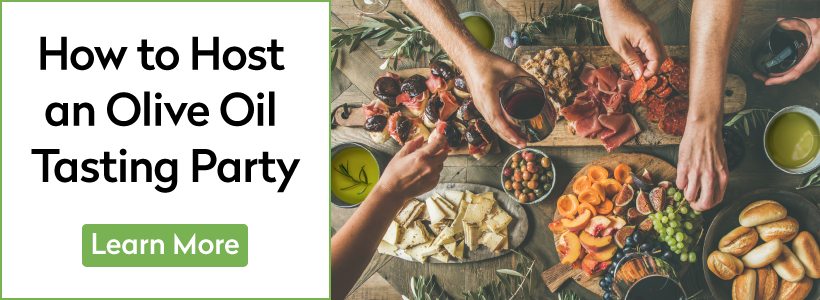
Recipes
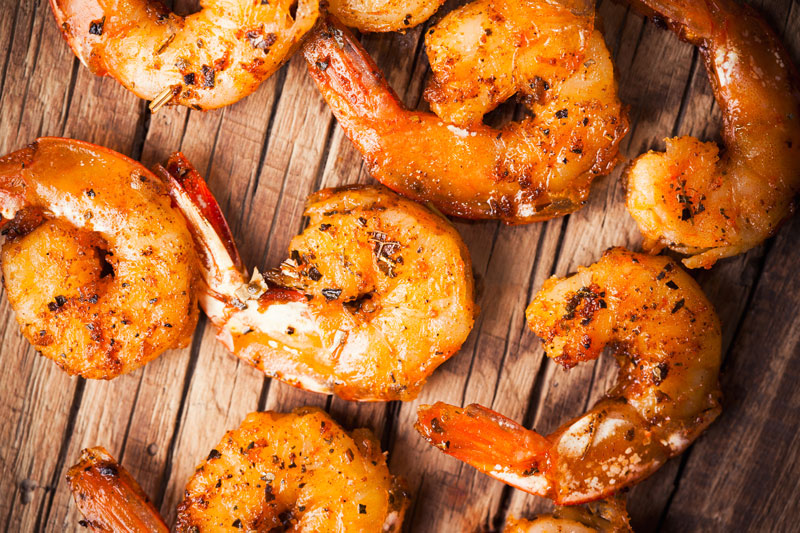 Garlic Shrimp (Gambas al Ajillo) We’ve included two tricks to make this the best gambas al ajillo you’ve ever eaten. First, we infuse extra virgin olive oil with slices of garlic, which are later used as a crunchy garnish. Second, we marinate the shrimp with a secret ingredient—baking soda—to make the cooked shrimp extra “poppy.” view recipe
Garlic Shrimp (Gambas al Ajillo) We’ve included two tricks to make this the best gambas al ajillo you’ve ever eaten. First, we infuse extra virgin olive oil with slices of garlic, which are later used as a crunchy garnish. Second, we marinate the shrimp with a secret ingredient—baking soda—to make the cooked shrimp extra “poppy.” view recipe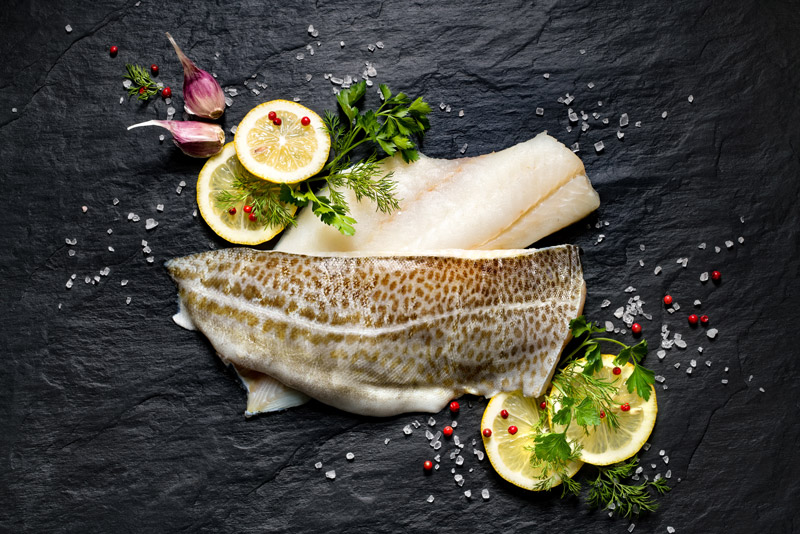 Spanish Cod with Celery Salsa Verde We often detect celery leaf–like flavors in the superior-quality oils we deliver to your table and were excited to find the following recipe. It uses celery leaves in a deliciously creative way. view recipe
Spanish Cod with Celery Salsa Verde We often detect celery leaf–like flavors in the superior-quality oils we deliver to your table and were excited to find the following recipe. It uses celery leaves in a deliciously creative way. view recipe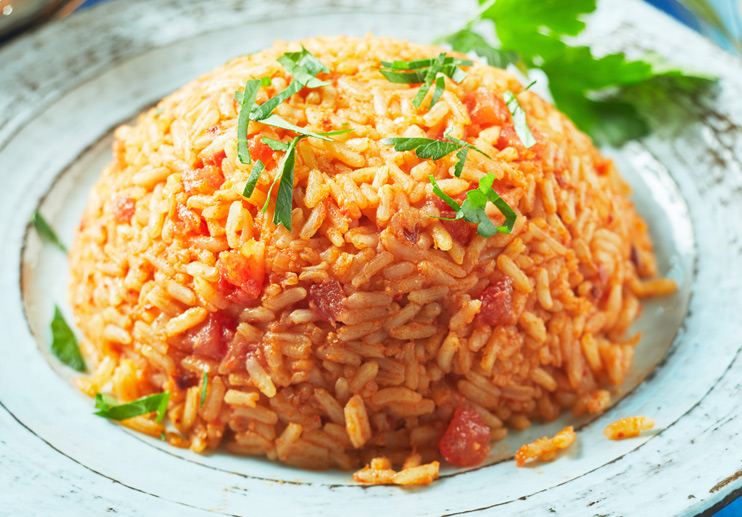 Portuguese Rice and Tomatoes The Portuguese are very talented at creating wonderful combinations from a limited palette of ingredients. Rice and tomatoes is a great example. Serve with roasted meats, especially chicken, and plenty of premium extra virgin olive oil. view recipe
Portuguese Rice and Tomatoes The Portuguese are very talented at creating wonderful combinations from a limited palette of ingredients. Rice and tomatoes is a great example. Serve with roasted meats, especially chicken, and plenty of premium extra virgin olive oil. view recipe Olive Oil Cake with Lemon and Almonds This easy-to-make cake is moist (thanks to the olive oil), dense, and very satisfying with a cup of coffee or tea or a glass of Spanish sherry or Portuguese port. If you’re feeling fancy, arrange a paper doily on top of the cake before sifting powdered sugar over it. Carefully remove the doily to preserve… view recipe
Olive Oil Cake with Lemon and Almonds This easy-to-make cake is moist (thanks to the olive oil), dense, and very satisfying with a cup of coffee or tea or a glass of Spanish sherry or Portuguese port. If you’re feeling fancy, arrange a paper doily on top of the cake before sifting powdered sugar over it. Carefully remove the doily to preserve… view recipe Olive Oil Dark Chocolate Mousse We’ve long known that olive oil and chocolate have a natural affinity for each other. This ethereal chocolate mousse proves it. The orange zest is optional and can be replaced by a few drops of Grand Marnier or other orange-flavored liqueur. view recipe
Olive Oil Dark Chocolate Mousse We’ve long known that olive oil and chocolate have a natural affinity for each other. This ethereal chocolate mousse proves it. The orange zest is optional and can be replaced by a few drops of Grand Marnier or other orange-flavored liqueur. view recipe Olive Oil Roasted Leeks How can only three ingredients create such a sublime dish? We can’t explain it! view recipe
Olive Oil Roasted Leeks How can only three ingredients create such a sublime dish? We can’t explain it! view recipe Broccoli Rabe with Pine Nuts and Raisins The slightly bitter flavor profile of broccoli rabe pairs beautifully with this quarter’s trio of olive oils. And the nuts and raisins give the dish textural contrast. view recipe
Broccoli Rabe with Pine Nuts and Raisins The slightly bitter flavor profile of broccoli rabe pairs beautifully with this quarter’s trio of olive oils. And the nuts and raisins give the dish textural contrast. view recipe Chicken that Fancies Itself Spanish Don’t let its tongue-in-cheek name fool you. This dish is delicious on a cool evening. view recipe
Chicken that Fancies Itself Spanish Don’t let its tongue-in-cheek name fool you. This dish is delicious on a cool evening. view recipe Steak Salad with Romesco Dressing Piquillo peppers are unique to Spain and are only sold in jarred form in the US. They can be found in many supermarkets and online. If you can’t find them, substitute one roasted, peeled red bell pepper. view recipe
Steak Salad with Romesco Dressing Piquillo peppers are unique to Spain and are only sold in jarred form in the US. They can be found in many supermarkets and online. If you can’t find them, substitute one roasted, peeled red bell pepper. view recipe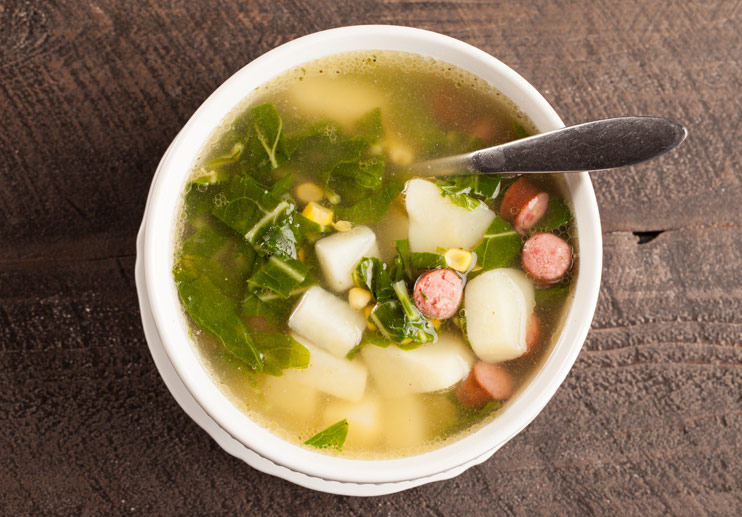 Portuguese Green Broth Humble ingredients define one of Portugal’s most beloved soups, caldo verde. It traditionally contains potatoes, olive oil, kale or Portuguese cabbage, and salt. For a vegetarian or vegan version, omit the sausage. view recipe
Portuguese Green Broth Humble ingredients define one of Portugal’s most beloved soups, caldo verde. It traditionally contains potatoes, olive oil, kale or Portuguese cabbage, and salt. For a vegetarian or vegan version, omit the sausage. view recipe
